Ennio Morricone – Svolta Definitiva (Città Violenta)
RCA SS 1985 Japan Released 1970
Track A – Città Violenta
Track B – Svolta Definitiva
Legendary master composer Ennio Morricone, is behind the soundtrack for the 1970 film Città Violenta, and this Japanese single release gifts us with two outstanding tracks from Sergio Sollim’s film. Italian soundtrack collectors…you need this!
Morricone was the unquestionable leader for scoring Italian cinema, and although he achieved wide recognition with Sergio Leone’s series of Westerns, we all are aware of his diverse range of colour, style, methods and moods. He was always exciting and knew how to create atmosphere, even if it was a totally new angle, and opposing the predictable. I get this feeling, when Ennio was composing scores for these kind of action thrillers of the 60’s and 70’s, it’s like he’s at the wheel of a Ferrari Dino 246, steering us in and out of dangerous and intense situations, speeding up, slowing down, then flooring it even more. And when things are calm, you’re still anticipating the unexpected. Morricone knows how to create atmosphere. He invented it for this era of cinema, and today we still love it, because it just belongs…it’s the right time and place for his mastery. Yes, we all are aware of Morricone’s talent, but what we have to keep reminding ourselves, is the amount of work he was producing and the variety of projects he was taking on. In 1970, the year Città Violenta was released, I count Morricone’s soundtrack tally to 15 films just for that year alone!
Directer Sergio Sollim’s crime thriller is released as Città Violenta in Italy, but it also had two additional releases in the US, the first as Violent City, then a later and wider release as The Family. This was an intentional name change for the 1973 release, to try and jump on the success of The Godfather that had been released the year earlier in 1972. The marketing department were even influenced by the famous Godfather font, with some blatant borrowing. This would be Sollima’s 7th (I think) feature film and would call on Morricone again, for his talents to score his new film as he had done with 3 of his earlier films, The Big Gun Down, Face to Face and Run, Man, Run, featuring Christy. I can assume their working relationship together was reverent and successful, however all Sollima’s three previous films they collaborated on, were westerns. I’m not sure how Sollima discussed or briefed sound concepts with Morricone for Città Violenta, but with hindsight, it would definitely become a new sound for his film catalogue.
Città Violenta carries some good acting talent as well, with Telly Savalas, Charles Bronson and his fairly new recent wife, Jill Ireland (Ireland’s former husband-actor David Mc Callum, first introduced them on the set of The Great Escape in 1963). Bronson was just becoming a major star in Europe after the success of recent and broad films such as London Affair, Adieu l’ami, and Sergio Leone’s Once Upon a Time in the West, and for a good period of the seventies, he would rival Clint Eastwood as the biggest movie star in the world.* So it’s great to see Bronson here at this important part of his acting career, and working alongside his wife. That same year and Bronson would also star in Cold Sweat, directed by Terence Young, and again co staring Ireland.
Synopsis – Jim Heston (Bronson) a professional hit man, is left for dead after a double cross murder attempt by a his wife Vanessa Shelton (Ireland) and another hit man. The set up costs him four years in jail, but when he gets out, he sets out to take revenge on his wife and the mob who put her up to it. He finds himself blackmailed by a powerful crime boss (Savalas), who wants the fiercely independent gunman to join his organization. Jeff who wants to leave that line of work, refuses, and is hunted by killers for the effort. Vengeance and love drives him through detrimental roads of uncertainty and it’s consequences.
The opening title sequence is beautifully stylised and features the main theme Città Violenta, straight up creating a mood of excitement, intrigue and suspense. And what soon follows, is a exceptional and insane thrilling car chase in the small streets of a tight Italian country town, where Sollim decides to take away the music for impact, and unusual but very effective decision for action sequences. I know when I’m discovering a new soundtrack track list, I usually go straight to the “car chase” theme, as it’s usually the one with the big beats and drive. So audiences are right in from the get go, and you already can tell this is no novice in the directors chair. Sollim knows about the film making and how music can be used to paint, just as much as visuals. And he wouldn’t be afraid to NOT use it, if he felt it may deter from story or action, or if it felt too predictable or typical to do so. The track Città Violenta gets a good run through the film as does a few nicely composed variations on the theme, but it is all for a reason. Svolta Definitiva is the perfect background music to a bar sequence where the patrons are the in-crowd… a bit hippy trippy, but an exclusive scene. Models, dancers and gangsters. It’s perfect! I have loved this track for many years before I knew this movie, and I was so please to discover that it belonged in such a great sequence! Later in the film we get some memorable hard hitting and surprising moments, and again Sollim creates such an impact with his music direction, and how effectively he uses it, and again, not uses it. Together the movie and music direction entwine effortlessly and results with a strong action film of it’s time, that both hold proudly in their catalogue of successes.
And this is also why Morricone’s music is so revered today. The impact it leaves on the audiences. His scores are often considered as much as part of the experience, as the story or cast of the film. A lot of the times, his scores are more remembered than the films itself. But in this case Città Violenta is a perfect score to a great crafted Sollim film. – Piero Sgro
Here is a link where you can watch Sollim’s Violent City, which is a nice print, but note that it will only on the occasion, revert to Italian dialogue every now and then. But it’s a good source.
Other Ennio Morricone scores for Sergio Sollima…
- The Big Gun Down 1967 (La resa dei conti) lit. ’The Settling of Scores
- Face to Face 1967 (Faccia a faccia)
- Run Man Run 1967 featuring Christy (Corri uomo corri)
- Devil in the Brain 1972 (Il Diavolo Nel Cervello)
Piero Umiliani scores for Sergio Sollima…
- Agent 3S3: Passport to Hell 1965 (Agente 3S3: Passaporto per l’inferno)
- Agent 3S3: Massacre in the Sun 1966 (Agente 3S3, massacro al sole)
* Sergio Leone once called Bronson “the greatest actor I ever worked with”, and had wanted to cast Bronson for the lead in 1964’s A Fistful Of Dollars. Bronson turned him down and the role launched Clint Eastwood to film stardom. The film was the biggest hit of 1969 in France.
Image 1 – Ennio Morricone (photo credit unknown)
Image 2 – Charles Bronson and fellow actress wife Jill Ireland (photo credit unknown)
Edda Dell’Orso – Kukumbe (Le montagne della luce)
As that saying goes, behind every great man, there is a great lady, but there was more than one that strengthened one particular composer’s work if we’re talking about Morricone. A key element so important to his sound, Morricone would expose and you could even say, flaunt his leading ladies up front in the mix down, even if they were at the time providing background sounds or atmospheric vocals.
I’m going to parallel two posts celebrating two important women with names that are synonymous with Morricone, particularly from the 60’s and 70’s, when that era of his film scores were infamous for that beautiful sensual psychedelic and at some times haunting sound. But I also want to present other composer’s that all contributed to that now distinctive classic Italian cinematic sound if that time. This post I’ll be looking into an Edda Dell’Orsa composition she undertook for one of those other composers, and with a follow up post, I will pursue a journey into the works of Maria Cristina Brancucci, also known as Christy. As always, I wish I was able to enlighten you all with more information about Dell’Orso’s musical journey, but facts and life details are a little mysterious and not too easy to come by. However I will go through a bunch of my favourite Edda tracks and touch on some of those great composer contributions.
Edda Lucia Sabatini, was born in Genoa, Italy on February 16, 1935 and married pianist Giacomo Dell’Orso in 1958. She studied singing and piano at the National Academy of Santa Cecilia in Rome from around 1958, and in time she would possess a beautiful soprano voice with a three octave range that would stamp many now legendary composers work.
![]() Around the mid sixties, Morricone was the first composer and conductor to use her astonishing voice for a feature film, and with immense artistry, he created unforgettable innovative vocal lines and sound effects. One of those early soundtracks was for Sergio Leone’s 1966 Il buono, il brutto, il cattivo (The Good, the Bad and the Ugly) and it includes one of the most celebrated Morricone’s themes, The Ecstasy of Gold, which is played while Tuco is frantically searching a cemetery for the grave that holds $200,000 in gold coins. This amazing piece of cinematic music has been covered from Yo Yo Ma to Metallica, but as famous as this soundtrack is today, Edda was actually was uncredited for her part. The soundtrack album was on the charts for more than a year, reaching No. 4 on the Billboard pop album chart and No. 10 on the black album chart. The main theme was also a hit for American musician Hugo Montenegro, whose rendition on the was a No. 2 Billboard pop single 2 years later in 1968.
Around the mid sixties, Morricone was the first composer and conductor to use her astonishing voice for a feature film, and with immense artistry, he created unforgettable innovative vocal lines and sound effects. One of those early soundtracks was for Sergio Leone’s 1966 Il buono, il brutto, il cattivo (The Good, the Bad and the Ugly) and it includes one of the most celebrated Morricone’s themes, The Ecstasy of Gold, which is played while Tuco is frantically searching a cemetery for the grave that holds $200,000 in gold coins. This amazing piece of cinematic music has been covered from Yo Yo Ma to Metallica, but as famous as this soundtrack is today, Edda was actually was uncredited for her part. The soundtrack album was on the charts for more than a year, reaching No. 4 on the Billboard pop album chart and No. 10 on the black album chart. The main theme was also a hit for American musician Hugo Montenegro, whose rendition on the was a No. 2 Billboard pop single 2 years later in 1968.
This was an incredibly busy period for Dell’Orso recording from film to film, studio to studio. Westerns were of course very popular after the success of A Fistful Of Dollars, and the hard working Dell’Orsa kept providing the goods, including the very moving titled track C’era una volta il West (Once Upon a Time in the West) for Sergio Leone in 1968, another Morricone partnership (1*). Again in ’71, another fitting title track with the quirky Giù la testa for Leone’s Duck, You Sucker! (also known as A Fistful of Dynamite and Giù la testa), but she also worked far beyond the Italian West.
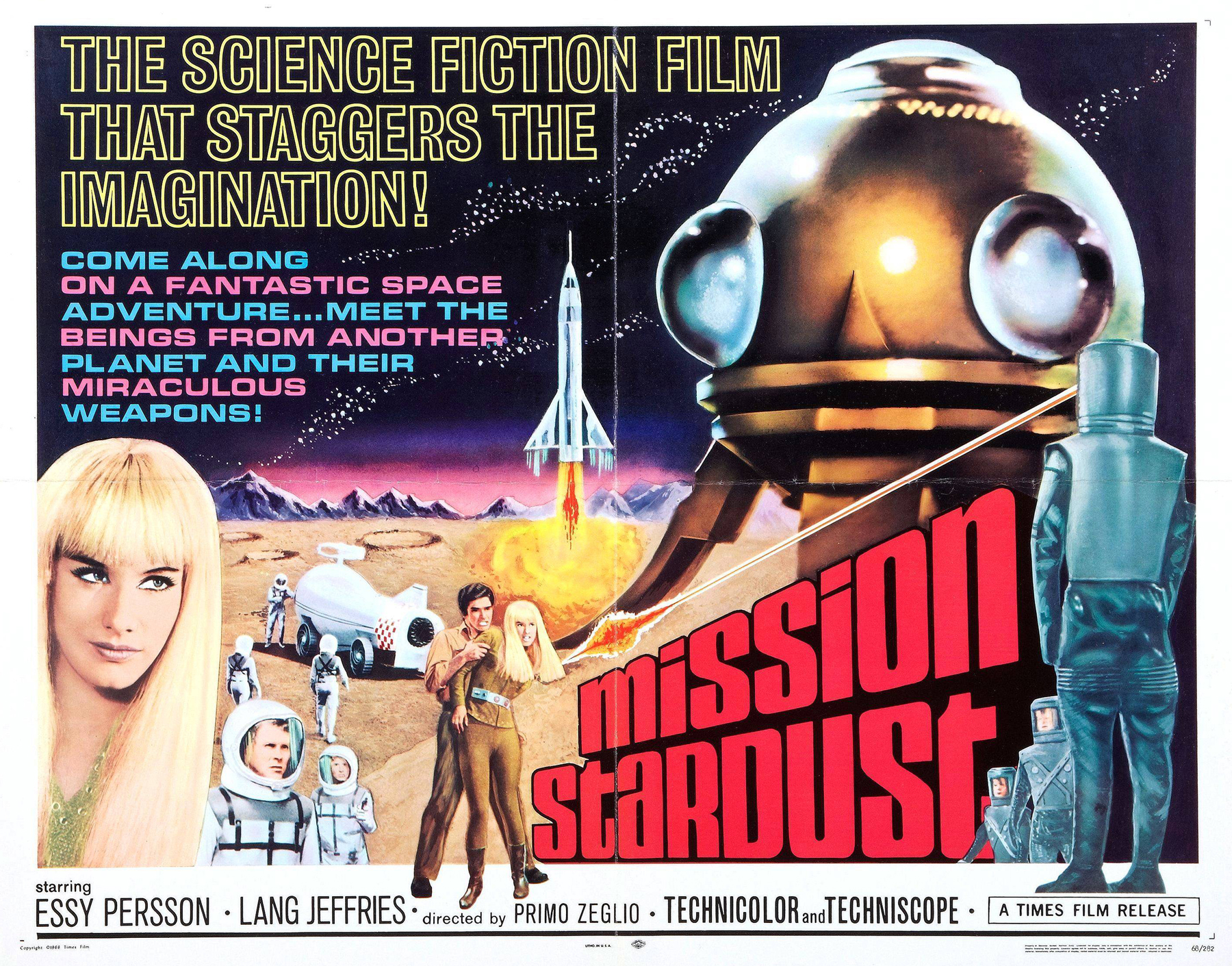 In 1967 Dell’Orso scores the opening swinging title song Seli, for the Italian science fiction film Mission Stardust (…4 …3 …2 …1 …morte), composed by Antón García Abril & Marcello Giombini. Some fans of the genre consider this offbeat film so appallingly bad that they playfully deny its very existence, however this rare soundtrack is also called a masterpiece by many jazzy lounge aficionados, which I tend to support. The next year Dell’Orsa contributes to the infamous Danger: Diabolk soundtrack, offering 3 alternate versions of Deep Down…The Shower, Eva’s Holy Dress and the tripped out, whimsical Emerald Bikini version. The title track was performed by Christy, another female legend of the Italian cinema soundtrack that Morricone liked to work with. 1969 offered up a true classic Dell’Orso-Morricone cooperative, with Metti una sera a cena for the Italian drama film of the same name, directed by Giuseppe Patroni Griffi. One of my favourites.
In 1967 Dell’Orso scores the opening swinging title song Seli, for the Italian science fiction film Mission Stardust (…4 …3 …2 …1 …morte), composed by Antón García Abril & Marcello Giombini. Some fans of the genre consider this offbeat film so appallingly bad that they playfully deny its very existence, however this rare soundtrack is also called a masterpiece by many jazzy lounge aficionados, which I tend to support. The next year Dell’Orsa contributes to the infamous Danger: Diabolk soundtrack, offering 3 alternate versions of Deep Down…The Shower, Eva’s Holy Dress and the tripped out, whimsical Emerald Bikini version. The title track was performed by Christy, another female legend of the Italian cinema soundtrack that Morricone liked to work with. 1969 offered up a true classic Dell’Orso-Morricone cooperative, with Metti una sera a cena for the Italian drama film of the same name, directed by Giuseppe Patroni Griffi. One of my favourites.
Dell’Orso moved into another film genre with the thriller La stagione dei sensi (Season of the Senses), bringing with her the lovely bossa styled Una Voce Allo Specchio. The title track for Giuseppe Patroni Griffi’s 1969 drama, Metti, Una Sera A Cena, is classic and rich in Dell’Orso spices, and was covered a few years later quite nicely by Milva. The 1967 chilling score for Bruno Gaburro sci-fi post-apocalyptic Ecce Homo I Sopravvissuti, which gave Morricone an alternate opportunity to get down low into the darker side of Dell’Orso’s vocal soul, and the outcome is a soundtrack which offer varied versions of Venuta dal mare throughout, that all raise the hairs. Staying on the horror theme, Dell’Orso contributed to two films by Italian shock horror director Dario Argento, the first in 1970 called L’uccello Dalle Plume di Cristallo (The Bird With Crystal Plumage), and then for Perche Si Uccidono? (Why Do They Kill Themselves), a film essay about drugs and self-destruction. For the latter 1976 film, the score was a collaboration with composer Fabio Frizzi and instrumental band Goblin (often used by Argento), under the pseudonym of Il Reale Impero Britannico.
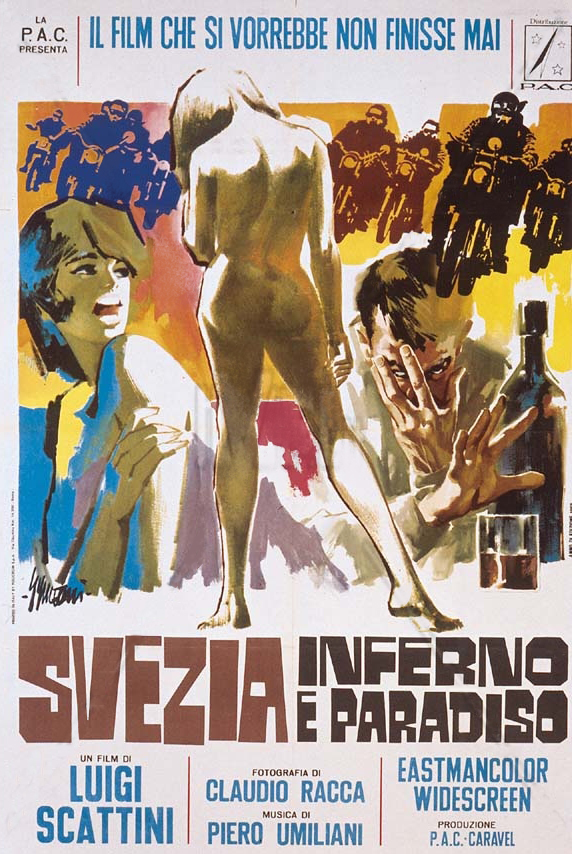 Dell’Orso was also providing her voice for other prominent, mostly Italian composers of those times, and was also a key figure of the I Cantori Moderni choir, which was founded by Morricone’s childhood friend and composer Alessandro Alessandroni (2*)(3*). Piero Umiliani was one composer that regularly worked with Edda & I Cantori Moderni, and some of the best Dell’Orso work came from this collaboration. One of Umiliani’s most recognised tracks is Mah Na Mah Na, which he did for Svezia, Inferno E Paradiso, a 1968 pseudo-documentary about sexuality in Sweden, which ironically was later popularized by Sesame Street and The Muppet Show. Another Umiliani-Dell’Orso standout is the fuzzed up Le isole dell’ amore, for the 1970 film with the same title, which to be honest I know absolutely nothing about! Another soundtrack worth mentioning from the same year, is the impossible to find whacked out 5 Dolls for an August Moon, originally titled 5 Bambole per la Luna d’Agosto, and directed by Mario Bava (4*). Also check out the very chic Luna Di Miele, which was recorded for the documentary directed by Mino Loy and Luigi Scattini called Questo Sporco Mondo Meraviglioso, and includes whistling by Alessandro Alessandroni.
Dell’Orso was also providing her voice for other prominent, mostly Italian composers of those times, and was also a key figure of the I Cantori Moderni choir, which was founded by Morricone’s childhood friend and composer Alessandro Alessandroni (2*)(3*). Piero Umiliani was one composer that regularly worked with Edda & I Cantori Moderni, and some of the best Dell’Orso work came from this collaboration. One of Umiliani’s most recognised tracks is Mah Na Mah Na, which he did for Svezia, Inferno E Paradiso, a 1968 pseudo-documentary about sexuality in Sweden, which ironically was later popularized by Sesame Street and The Muppet Show. Another Umiliani-Dell’Orso standout is the fuzzed up Le isole dell’ amore, for the 1970 film with the same title, which to be honest I know absolutely nothing about! Another soundtrack worth mentioning from the same year, is the impossible to find whacked out 5 Dolls for an August Moon, originally titled 5 Bambole per la Luna d’Agosto, and directed by Mario Bava (4*). Also check out the very chic Luna Di Miele, which was recorded for the documentary directed by Mino Loy and Luigi Scattini called Questo Sporco Mondo Meraviglioso, and includes whistling by Alessandro Alessandroni.
So lets now move on to the feature 7″ which was recorded for Giorgio Moser’s TV special Le Montagne Della Luce. Kilimangiaro is a beautifully produced composition with Dell’Orso’s trademark atmospheric artistry. Arranged by Gianni Oddi and composed by Romolo Grano, this track alone is well worth the effort it will take to find this rare thing. However while the titled A side was probably the selling point, it’s the magnificent B-side Kukumbe, that I think is the dynamic and most grooviest track she’s worked on. Big breaks, fender rhodes, jazzy trumpet, congas and top scat vocals by Edda, all amount up to a very sizeable and rhythmic killer production. I’ve been fortunate enough to play this on a big sound system and it was real fun! That bass drive grooves very nicely with that back beat. Now if you’re hoping that there’s a few Dell’Orso 7″s that you need to get a hold off, well in fact as far as I know there are only a few officials, one other being an earlier release from ’69 titled Sospendi Il Tempo, for the psychodrama La stagione dei sensi.
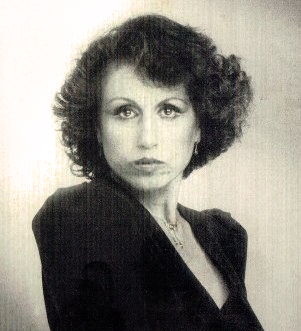 Dell’Orso would continue to record for many soundtracks and collaborate with many musicians. There was a very pertinent chemistry delivered in 1974 when Dell’Orso voice was utilized quite significantly on Italian master guitarist Bruno Battisti D’Amario’s album Samba Para Ti, which includes the beautiful spaced out Show Samba and the frantic upbeat Playa Sin Sol. The following year proceeded with a second team-up album called Granada and includes the standout upbeat latin dancer Su Delicia and a very cool version of Ipanema. In 1976 she worked alongside her hubby’s brother Gianni Dell’Orso, and laid down the sexy discotheque track Night Magic for Mondo Di Notte Oggi (directed by Gianni Proia), a soundtrack which has some nice funk moments, in particular on Soul Meeting.
Dell’Orso would continue to record for many soundtracks and collaborate with many musicians. There was a very pertinent chemistry delivered in 1974 when Dell’Orso voice was utilized quite significantly on Italian master guitarist Bruno Battisti D’Amario’s album Samba Para Ti, which includes the beautiful spaced out Show Samba and the frantic upbeat Playa Sin Sol. The following year proceeded with a second team-up album called Granada and includes the standout upbeat latin dancer Su Delicia and a very cool version of Ipanema. In 1976 she worked alongside her hubby’s brother Gianni Dell’Orso, and laid down the sexy discotheque track Night Magic for Mondo Di Notte Oggi (directed by Gianni Proia), a soundtrack which has some nice funk moments, in particular on Soul Meeting.
Many years later in 2011, Danger Mouse and Daniele Luppi released Rome, a soundtrack for a non-existent movie, that took five years to record. Obviously die hard fans of that era of Italian cinematic sound, the producers had their hearts set to develop the sound and process as authentic to that time as possible. The album was recorded using only vintage analogue recording equipment and musical instruments fro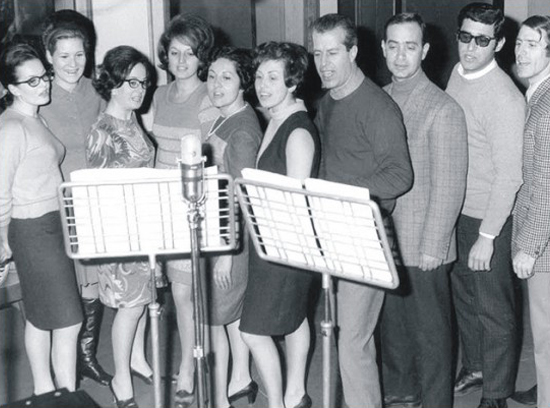 m the 1960s and 1970s. They also took the opportunity to reunite Alessandroni’s Cantori Moderni choir, who had not performed together since the early 1980s. Dell’Orso’s beautiful voice can be heard on the Theme of Rome track. The album also features vocals by Norah Jones and also Jack White who also provided the lyrics for his three songs. Even more recent, Dell’Orso was picked up by Alex Puddu, another true devotee of Italian vintage sound, to work on his 2013 album Registrazioni Al Buio, where she laid down 3 very smooth tracks (5*).
m the 1960s and 1970s. They also took the opportunity to reunite Alessandroni’s Cantori Moderni choir, who had not performed together since the early 1980s. Dell’Orso’s beautiful voice can be heard on the Theme of Rome track. The album also features vocals by Norah Jones and also Jack White who also provided the lyrics for his three songs. Even more recent, Dell’Orso was picked up by Alex Puddu, another true devotee of Italian vintage sound, to work on his 2013 album Registrazioni Al Buio, where she laid down 3 very smooth tracks (5*).
To try and cover all the composers, producers and productions Edda Dell’Orso worked with especially in the specific 60′ to 70’s period, would be a bit of a feat, and true fans will agree that I’m really only scratching the surface here. Her work is the epitome of intelligence and sophistication and she is the sound of Italian cinema, and remarkably she still continues to perform today with her strong distinctive voice. And obviously there’s a lot more we can talk about, regarding those great Italian composers that she worked with, that thankfully are now getting the praise they have always deserved. In time I’m hoping to cover a special selection of favourite cinematic Italian 7’S, but for now, stay tuned because there will be a follow up post tomorrow, celebrating another Italian female legend of the cinema soundtrack, Christy.
(1*) Edda Dell’Orso performing C’era una volta il West live in 1982.
(2*) Alessandroni was an accomplished whistler, and he can be heard quite famously on numerous Leone’s western soundtracks, and also was responsible for THAT twangy guitar riff that is central to the main theme for The Good, the Bad and the Ugly.
(3*) I Cantori Moderni, was an eight-to-sixteen person vocal group featuring Edda Dell’Orso, Giulia De Mutiis (Alessandroni’s first wife), Gianna Spagnuolo, Augusto Giardino, and Franco Cosacchi.
(4*) Mario Bava’s work from the “golden age” of Italian horror films is said to have kick-started the giallo film genre and the modern “slasher film”. He was also a special effects artist and had all director, screenwriter, and cinematographer credits for many movies including Danger: Diabolik, Planet of the Vampires, The Whip and the Body, Black Sabbath and Kill, Baby, Kill to name but a few.
(5*) Dell’Orso with Alex Puddu band captured live in Copenhaghen.
Research and referencing…








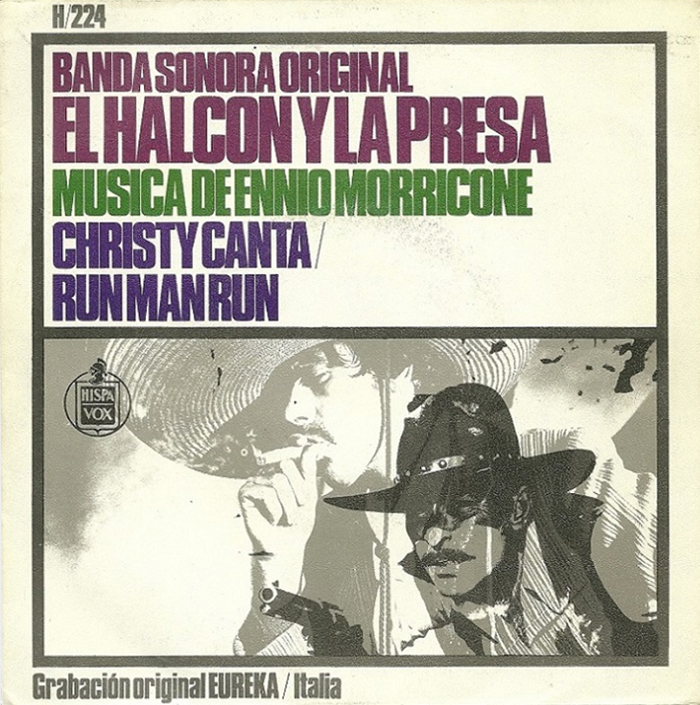






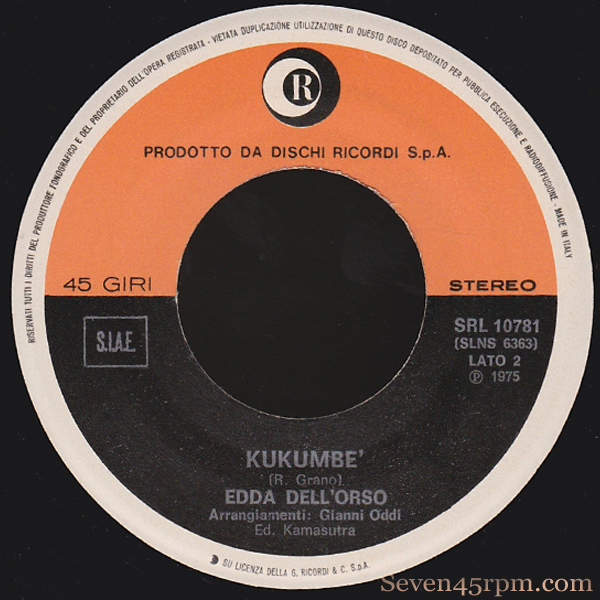
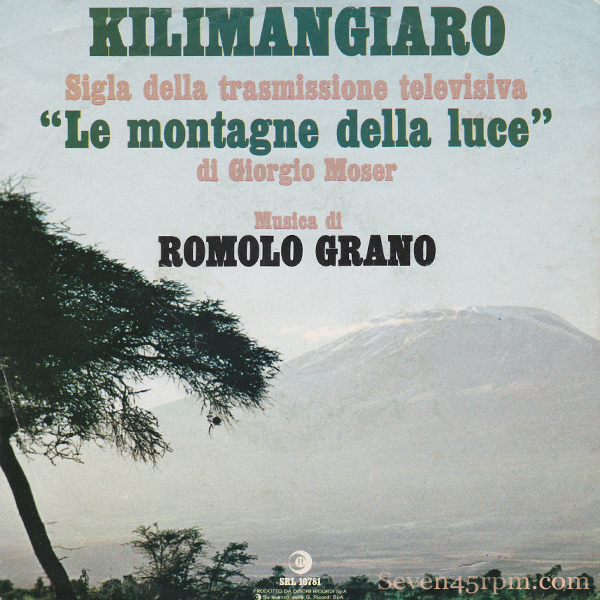
Recent Comments